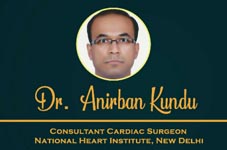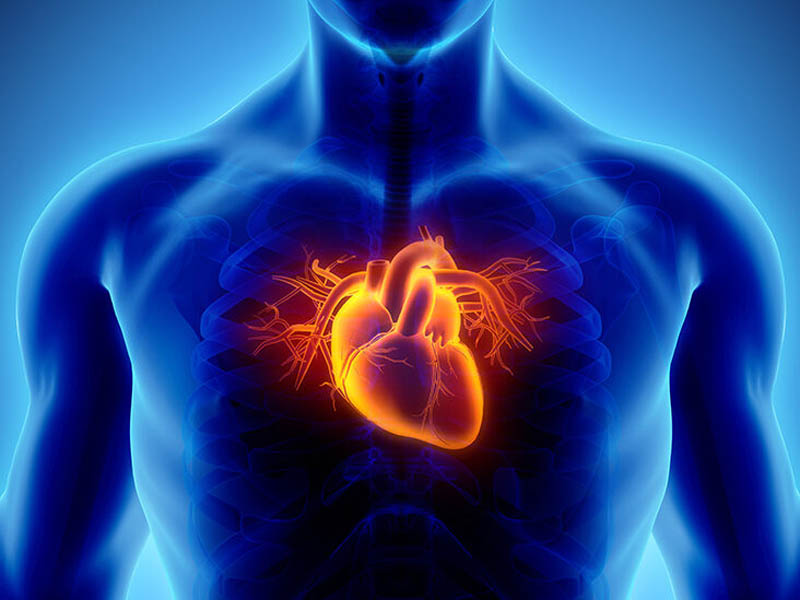The scourge of Coronary Artery disease (CAD), caused by cholesterol deposits in the heart blood vessels, is assuming major proportions in our country and the world. This author can testify to the falling average age of patients undergoing coronary artery bypass surgery (CABG) for blocked coronary arteries. Even patients as young as 28 have undergone bypass surgery! There are a multitude of factors at play here, many of these being linked to our genetic makeup. Indians, as a whole are more prone to developing diabetes mellitus, have smaller sized coronary arteries and a greater likelihood of having a deranged lipid profile. Add to this genetic burden devils like smoking, obesity, poor dietary habits, lack of exercise, stress and air pollution AND you have a deadly formula for developing severe CAD.
Although modern medicine has made great strides in the management of CAD, including surgical and interventional techniques, there is always that grey area, wherein self-styled doctors and “experts” dish out miracle cures, promising to rid you of your artery blocks using simple, novel technologies and home remedies. One only needs to Google “cure of coronary artery blocks” and voila, you are bombarded with both authentic advice, followed by the more dubious of these with their tall claims and (unfortunately) authoritative-appearing websites! These “treatments” take many forms, from juices that can be easily made at home, injections that promise to “clean” your arteries, to the downright loony stuff comprised of magic diets and local medicines that promise to send your blood cholesterol and plaques on a permanent vacation (needless to say, this last category brings up the rear in Google searches)!
However, this is not intended to be a blanket condemnation of alternative therapies for CAD. Certain medical therapies have been proposed that are being used in very selective cases under very strict and specific guidelines. The problem arises when these techniques begin to be touted as a “Replacement” for conventional, tried-and-trusted interventional modalities of treating CAD, be they angioplasty or bypass surgery. I will be discussing two of these therapies in some detail, namely Enhanced External Counterpulsation (EECP) and Chelation therapy.
EECP is a technique aimed at increasing the return of venous/”impure”/de-oxygenated blood to the heart by means of a series of inflatable blood pressure-monitoring cuffs wrapped around the calves and thighs. These cuffs are made to serially inflate and deflate in rhythm with the heart’s contraction and relaxation phases, thereby driving more venous blood into the heart. The effect of this manoeuvre is two-fold: 1, it increases the volume of blood available to the heart to pump to the body and 2, it improves the blood flow through the coronary arteries. Other possible mechanisms by which it benefits, is triggering the release of certain molecular signals that cause the development of small collateral blood vessels that augment the coronary supply. Obviously patients who are already in a state of severe heart failure, those that have blocks in their lower limb blood vessels are not candidates for this procedure. Numerous studies however, have failed to show any definite benefit in patients of CAD undergoing this treatment. The only benefits have been shown in a few, isolated studies, in which participants were too few to draw any meaningful conclusions.
After reviewing the available evidence, learned bodies like the American Heart Association (AHA, whose guidelines for the management of heart disease are followed worldwide) stated that the technique may be considered for symptomatic relief of patients of severe CAD whose symptoms are not alleviated with maximal medical therapy. The European Society of Cardiology (ESC, a similar body of Europe) goes a step further and recommends this as an alternative therapy in patients with symptoms not relieved by medicine, but adds the rider that such patients must have coronary artery lesions that are NOT suitable for either angioplasty or bypass surgery. This last point is very important to understand: EECP IS NOT A SUBSTITUTE FOR EITHER BYPASS SURGERY OR ANGIOPLASTY. If a patient’s symptoms are not relieved by medication, AND their coronary vessels and blocks are amenable to either angioplasty or bypass surgery, they will derive the BEST long-term results in terms of survival and symptomatic relief by these techniques.
Chelation therapy, a technique involving a series of gradual intravenous injections of disodium ethylene diamine tetraacetic acid (EDTA) in combination with other substances, has been touted as a putative noninvasive means of improving blood flow in blocked coronary vessels, treating angina symptoms and preventing cardiac events. EDTA (normally used to prevent blood clot formation in blood sample-collecting vials) combines with polyvalent cations like calcium and cadmium to form soluble complexes that are subsequently excreted from the body. Its proponents claim that this causes regression of cholesterol plaques with consequent relief from angina. However, many well-designed randomized controlled trials (RCTs) which compared chelation with conventional medical therapy failed to demonstrate any benefit with respect to clinical parameters like, symptom relief, survival, hospitalisation, etc.
This is actually an approved treatment for other conditions like lead or iron poisoning, as the chemical binds to these metals and excretes them from the system. But the usefulness in CAD is highly questionable with uncertain benefits, as stated by the AHA. In addition, chelation therapy is not risk- free. Disodium EDTA, particularly when infused too rapidly, may cause hypocalcemia (a precipitous fall in blood calcium levels that is harmful to the heart), renal failure, and even death.
Finally, as regards the home-brewed lotions and potions that promise to clear up your arteries of the cholesterol buildup, let me say this loud and clear: There is NO such therapy known to clear up cholesterol plaques that have already built up in the vessel walls. These remedies at best can serve as a preventive measure to reduce blood cholesterol and /or facilitate its excretion, so as to reduce the chances of plaque formation and buildup in the vessels. However, a well-known drug that is regularly used as part of the armamentarium to treat CAD has been shown to reverse plaque buildup in experimental animal models. That honour goes to the class of drugs known as STATINS, which are prescribed to lower blood cholesterol levels. Unfortunately, the doses at which this action is exerted is much higher than what is usually prescribed on a daily clinical basis. Higher doses of statins are associated with side effects like muscle pain and liver dysfunction. Hence current guidelines recommend use of statins in clinically tolerated doses to at best stabilise the plaques (retard their progression), rather than cause their regression.
To conclude, one should be aware of false promises of miraculous treatments that promise things like “clearing” of plaques or “freedom from surgery.” Rest assured, such discoveries or inventions are surely worthy of a Nobel prize and would be accorded the importance they deserve, rather than being relegated to dubious WhatsApp forwards by concerned relatives, neighbours and friends!
Acknowledgement: The idea of this article came as a result of a WhatsApp forward from Ms. Meenakshi Pahuja regarding EECP as a substitute for bypass surgery. She then suggested that I write an article on this.
 |
Dr. A. Kundu, Consultant Cardiac Surgeon, National Heart Institute New Delhi |


